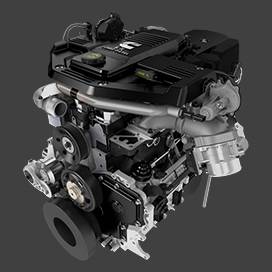12 月 . 03, 2024 18:09 Back to list
how to remove a brake drum that is stuck
How to Remove a Stuck Brake Drum
Working on your vehicle’s brake system can be a daunting task, especially when it comes to removing a stuck brake drum. This can be a common problem for many car owners, particularly in older vehicles or those that have been exposed to harsh weather conditions. Below is a detailed guide on how to safely and effectively remove a stuck brake drum.
Tools and Materials Needed
Before you start, gather the following tools - Jack and jack stands - Lug wrench - Brake drum puller (if necessary) - Hammer or mallet - Pry bar - Penetrating oil (such as WD-40) - Safety goggles and gloves - Torque wrench
Safety First
Before beginning any maintenance on your vehicle, safety should be your primary concern. Make sure your vehicle is parked on a flat surface and turn off the engine. Apply the parking brake and put wheel chocks behind the wheels that will remain on the ground to prevent any movement.
Step 1 Remove the Wheel
Using a lug wrench, loosen the lug nuts on the wheel where the brake drum is located. It’s often easier to do this while the wheel is still on the ground. Once loosened, lift the vehicle with the jack and securely place it on jack stands. Remove the wheel completely to expose the brake drum.
Step 2 Inspect the Brake Components
Before proceeding with removal, inspect the condition of the brake components. Look for any signs of wear or damage that may need addressing. Make sure the brake drum is the only component causing issues before attempting to remove it.
Step 3 Apply Penetrating Oil
If the brake drum appears to be stuck, apply a generous amount of penetrating oil around the hub area where the drum meets the wheel hub. Allow it to soak for at least 15 to 20 minutes. This will help loosen any rust or corrosion that may be binding the drum.
Step 4 Use a Hammer or Mallet
how to remove a brake drum that is stuck

After letting the penetrating oil set, use a rubber mallet or hammer to tap around the edges of the brake drum. This process can help break any rust or debris that may be holding it in place. Be sure to tap gently to avoid damaging the drum itself.
Step 5 Utilize a Pry Bar
If tapping doesn’t work, you can use a pry bar to carefully pry the drum away from the hub. Insert the pry bar between the drum and the backing plate, and gently push or pull to create some space. Work your way around the drum, applying even pressure, until it begins to come loose.
Step 6 Use a Brake Drum Puller (if necessary)
For particularly stubborn drums, a brake drum puller may be required. These tools are designed to evenly apply pressure around the drum, facilitating a smoother removal. Follow the instructions that come with the puller, ensuring that it’s securely attached to the drum before tightening it.
Step 7 Remove the Brake Drum
Once the drum is loose, you should be able to slide it off the hub. Be cautious as you remove it, as there might be residual brake dust. It's also a good time to check the brake shoes and other components for wear or damage.
Step 8 Clean and Lubricate
After removing the drum, clean the hub surface and inspect the entire brake assembly. If everything looks good, you can apply a thin layer of brake grease on the hub to prevent the drum from sticking in the future.
Step 9 Reassemble and Test
Once you have completed the necessary maintenance, reassemble the brake components by sliding the drum back into place and reattaching the wheel. Tighten the lug nuts in a star pattern to ensure even pressure. Finally, lower your vehicle and perform a brake test in a safe area before returning to normal driving conditions.
Conclusion
Removing a stuck brake drum can be a straightforward process if you have the right tools and take the necessary precautions. Always work safely, and don’t hesitate to consult a professional if you encounter significant difficulties. Regular maintenance of your brake system is key to ensuring safety on the road.
-
Brake Drum for Kamaz Trucks Durable OEM Replacement & High Performance
NewsMay.30,2025
-
Brake Drum Man High-Quality Drum Brake & Shoe Solutions
NewsMay.30,2025
-
High-Performance Brake Drum for Kamaz Trucks Durable Drum Brake Components
NewsMay.29,2025
-
Brake Drum Man High-Quality Drum Brake Drums & Brake Shoes
NewsMay.29,2025
-
Brake Drum MAZ High-Performance & Durable Replacement Parts
NewsMay.29,2025
-
heavy truck brake drums
NewsMar.07,2025
